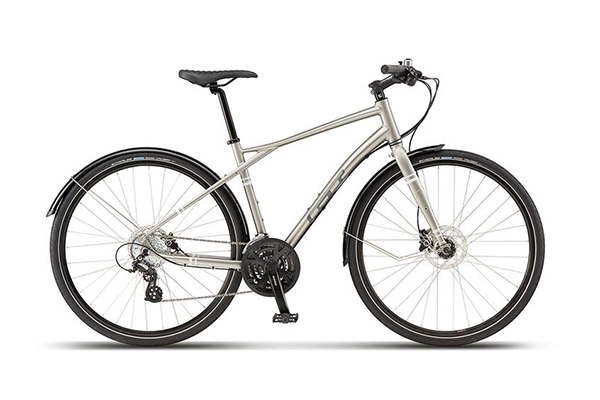Gravel is an essential component in construction projects, serving as a base material for roads, driveways, and walkways, as well as a drainage layer for retaining walls and other structures. However, not all gravel is created equal, and choosing the right type for your project can have a significant impact on its performance and longevity.
Two common types of gravel used in construction are CA6 and CA7 gravel. In this article, we’ll explore the differences between these two types of gravel, their properties and characteristics, and which one may be best suited for your project needs.
What is CA6 gravel?
CA6 gravel, also known as grade 8 or road stone, is a coarse aggregate typically composed of crushed limestone or dolomite. It is commonly used in construction projects where a solid, stable base is required, such as for roads, parking lots, and driveways.
Characteristics and Properties
CA6 gravel is typically gray in color, with particle sizes ranging from 3/4 inch to 1 1/2 inches. Its angular shape and interlocking nature allow it to form a strong and stable base layer, while its permeability promotes drainage and prevents water buildup.
Advantages and Disadvantages
CA6 gravel has good stability and durability. Its interlocking nature creates a strong, load-bearing layer that can withstand heavy traffic and frequent use. Additionally, its permeability helps prevent water buildup, reducing the risk of erosion and damage.
However, CA6 gravel may not be suitable for projects where a more decorative or aesthetically pleasing finish is desired. Its gray color and coarse texture may not be visually appealing, and it may require additional layers or finishing materials to achieve the desired look.
What is CA7 gravel?
CA7 gravel, also known as 3/4″ minus or quarry process, is another type of coarse aggregate commonly used in construction projects. It is composed of a mixture of crushed stone and stone dust, and is often used as a base material for patios, walkways, and other landscaping projects.
Characteristics and Properties
CA7 gravel is typically brown or tan in color, with particle sizes ranging from 3/4 inch down to fine dust. Its compact nature and high fines content make it a popular choice for use as a base layer in landscaping projects, as it provides a solid, stable foundation for pavers, stones, and other materials.
Advantages and Disadvantages
CA7 gravel has good compact nature, which allows it to form a solid, stable base layer that can withstand heavy foot traffic and other use. Additionally, its fine dust content helps it to bond together, further improving its stability and load-bearing capacity.
However, one of the main disadvantages of CA7 gravel is its permeability. Its fine dust content can create a compacted layer that does not allow for water to drain through, leading to potential drainage issues and standing water.
Comparison of CA6 and CA7 gravel
While both CA6 and CA7 gravel are commonly used as base materials in construction and landscaping projects, there are several key differences between the two that should be considered when choosing which one to use.
Particle Size and Shape
CA6 gravel typically has larger, more angular particles, while CA7 gravel has smaller, more rounded particles. This can affect how the gravel compacts and how well it interlocks, which in turn affects its stability and load-bearing capacity.
Composition and Color
CA6 gravel is typically composed of crushed limestone or dolomite, which gives it a gray color, while CA7 gravel is a mixture of crushed stone and stone dust, giving it a brown or tan color.
Strength and Durability
Both CA6 and CA7 gravel are durable and able to withstand heavy use, but their strength and durability may vary depending on the specific project requirements. CA6 gravel’s angular shape and interlocking nature make it a strong and stable base material that can handle heavy traffic and frequent use. Meanwhile, CA7 gravel’s fine dust content helps it to bond together, improving its stability and load-bearing capacity.
Cost Comparison
The cost of CA6 and CA7 gravel can vary depending on factors such as location, availability, and transportation costs. Generally, CA6 gravel is slightly more expensive than CA7 gravel due to its larger particle size and higher durability.
Which gravel to use for your project?
When choosing between CA6 and CA7 gravel for your project, there are several factors to consider. Some of these include:
- The specific project requirements and intended use
- The desired finish or appearance
- The drainage and water management needs of the project
- The budget and cost considerations
For projects where a solid, load-bearing base layer is required, such as for roads or parking lots, CA6 gravel may be the best option. However, if you’re looking for a more decorative or visually appealing finish, or if drainage is a primary concern, CA7 gravel may be a better choice.
Ultimately, the choice between CA6 and CA7 gravel will depend on your specific project needs and requirements, and it’s important to consult with a professional contractor or landscaper to determine which type of gravel is best suited for your project.
Conclusion
Choosing the right type of gravel for your construction or landscaping project can have a significant impact on its performance, durability, and longevity. While both CA6 and CA7 gravel are commonly used as base materials, they have distinct differences in their particle size, composition, color, and properties.
When choosing between CA6 and CA7 gravel, it’s important to consider factors such as the specific project requirements, intended use, drainage needs, and budget. By understanding the differences between these two types of gravel and their respective advantages and disadvantages, you can make an informed decision and ensure the success of your project.




